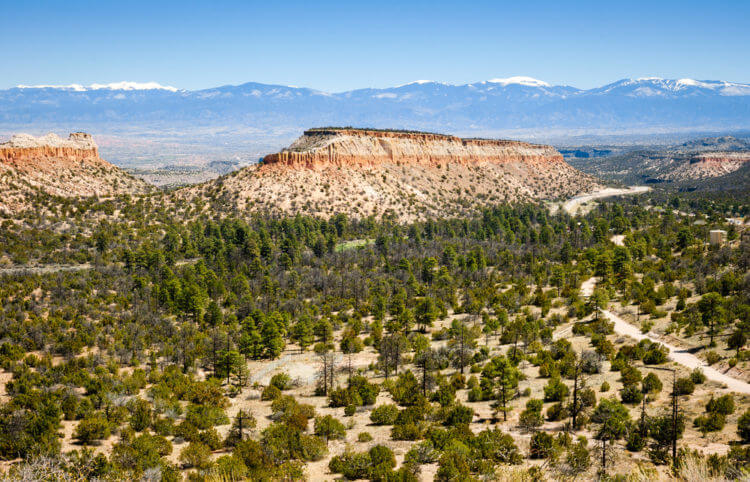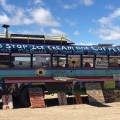
Exploring Los Alamos, New Mexico
Located on a mesa top in a mountain range born from an explosion of lava and magnum, Los Alamos is a fascinating New Mexico destination. The birthplace of the atomic bomb, which was the result of the super-secret Manhattan Project run by J. Robert Oppenheimer in the waning years of WWII, today the town still retains a distinct scientific vibe and is home to more Ph.Ds per capita than anywhere else on the planet. But it’s also a naturally gorgeous place with plenty to do in the great outdoor surrounding town.
Begin your Los Alamos explorations at the Los Alamos History Museum. In the town’s oldest continually occupied building that once served as an infirmary, it gives you the whole story of this city. You’ll learn about the original inhabitants, the Anasazi Indians who settled the area, and also about the scientists who made Los Alamos famous when they built America’s first nuclear weapon at Los Alamos National Laboratory.
Admission to the museum also grants access to the Hans Bethe House, which houses an excellent collection of Cold War exhibits that do a good job of showing the extreme political tension of that time.
The Cold War may have ended nearly 30 years ago but Los Alamos National Laboratory still employees about 11,000 people today.
“About 50 percent of their work is still related to nuclear weapons because whether we like it or not, the director of the laboratory has to certify to the President of the United States every year that the arsenal is effective and safe. And so that’s what they spend a lot of time on since we haven’t tested a bomb since 1992,” said Heather McClenahan who serves as the Executive Director of Los Alamos Historical Society and grew up here.
How they do this is equally fascinating.
“They use really, really big fast supercomputers to do simulations and models and look at aging plutonium and what does that mean and try and figure all this stuff out,” she said. “So Los Alamos always has one of the top, usually three to five fastest computers in the world. Sometimes it’s the fastest and as a result of that, these computers are used for a lot of other things.”
These other things range from work with climate change to oceanography and astrophysics.
To learn more about these supercomputers, head to the Bradbury Science Museum. It is part laboratory and part museum and here you’ll find cruise missiles hanging from the ceilings and life-sized replicas of Fat Man and Little Boy, which were the atomic bombs that dropped on Japan during WWII. The supercomputer exhibit, however, gives you a good behind-the-scenes look at how the U.S. nuclear weapons stockpile is maintained.

Los Alamos is also a beautiful place despite its link to creating a weapon capable of so much destruction. And this beauty is what drew Oppenheimer here in the first one.
“One of the reasons Oppenheimer wanted the laboratory to be on this plateau was because he wanted these beautiful vistas to inspire the scientists and to help them to think big and think creatively and do great work,” said McClenahan. “And he loved this area. He loved northern New Mexico and had spent a lot of time here; a lot of summers here. And so the opportunity to put the laboratory here was just ideal for him.”
Today it also serves as a gateway to Bandelier National Monument, the Valles Caldera National Preserve, and the new Manhattan Project National Historical Park and offers a diverse range of outdoor excursions. There are also a number of lodging and dining options in town — try El Parasol for counter-service Mexican or the Pyramid Cafe for sit down comfort fare.
Check my full experience in Los Alamos, New Mexico, below!











